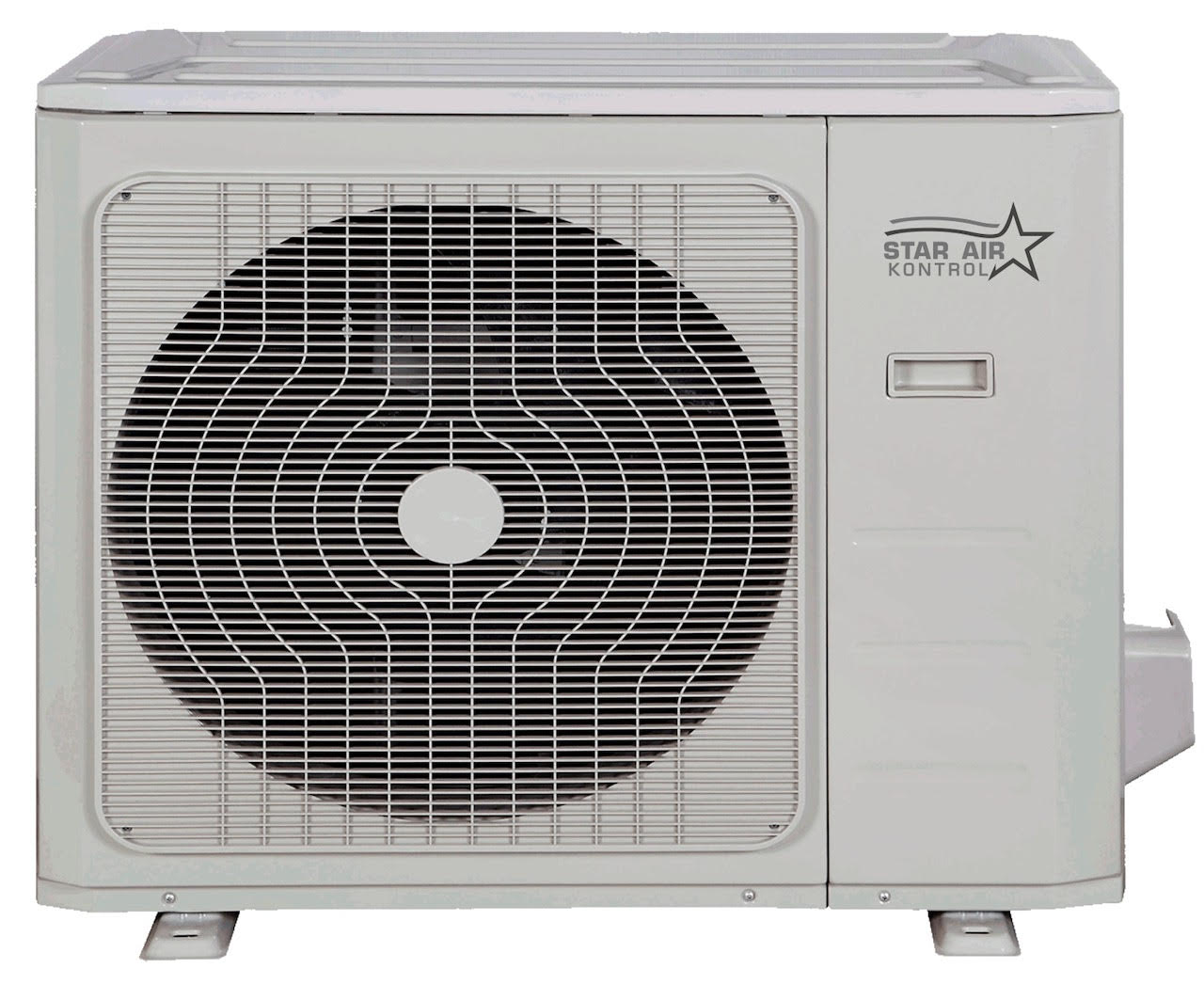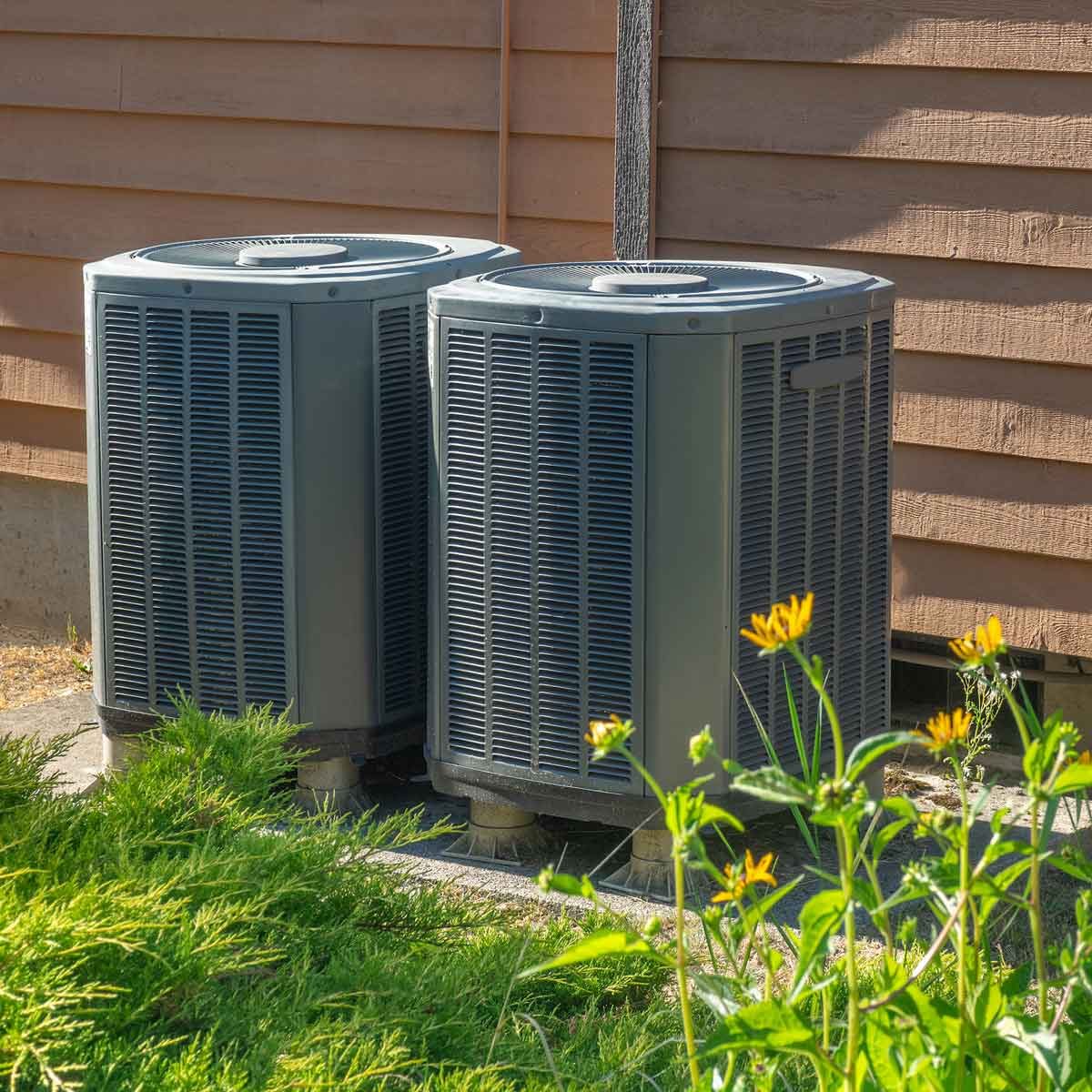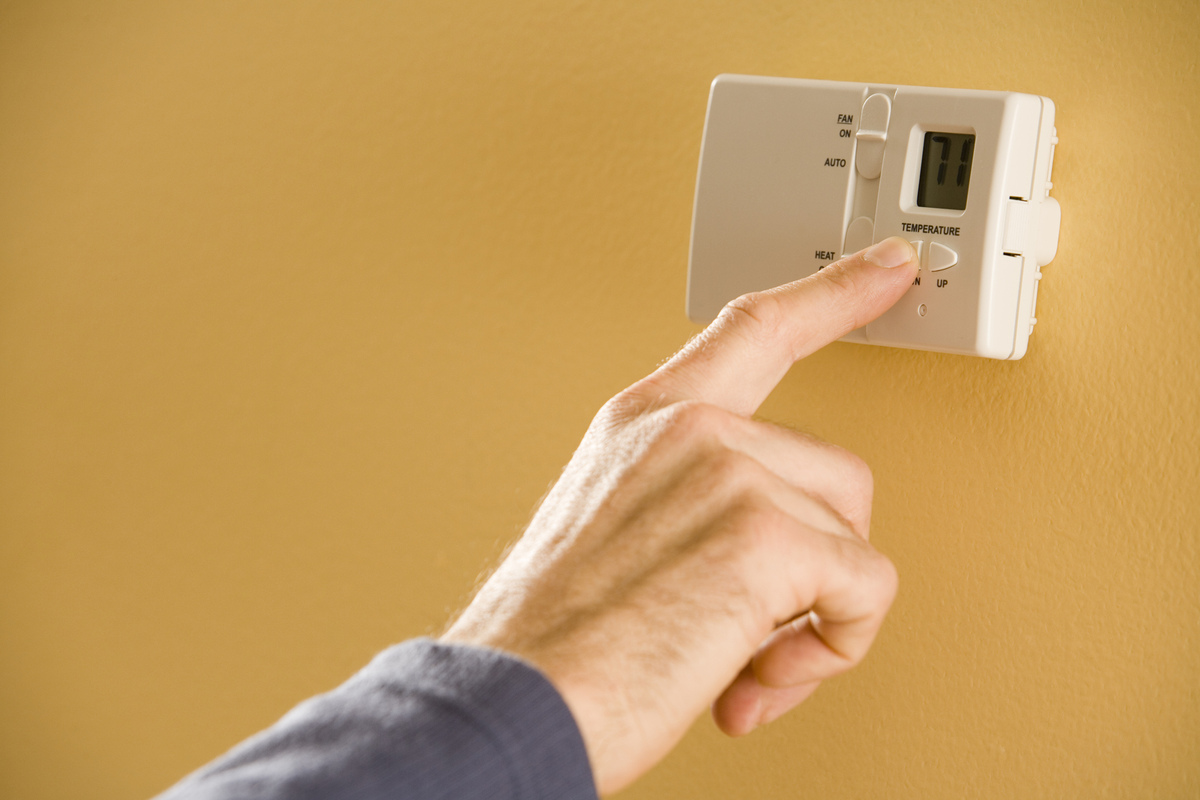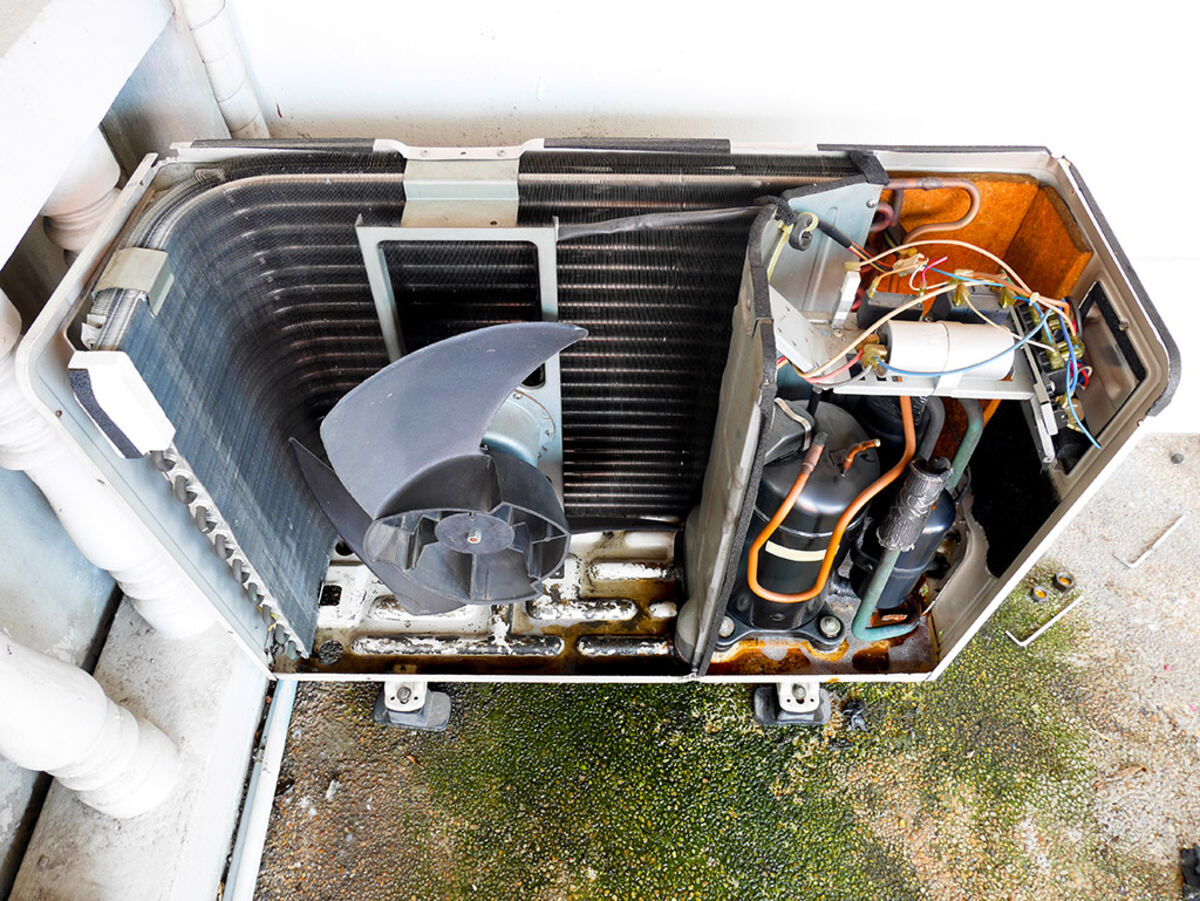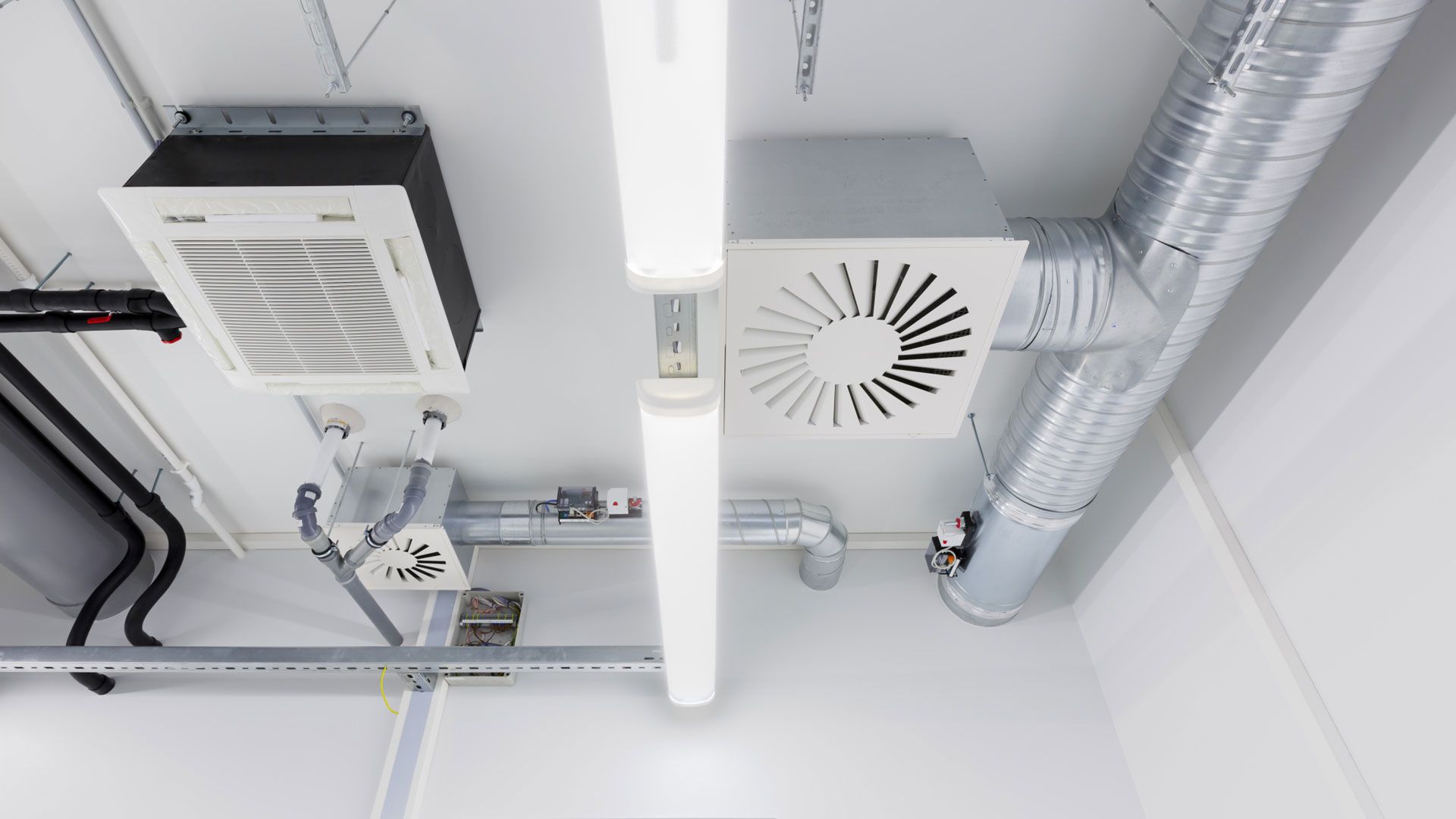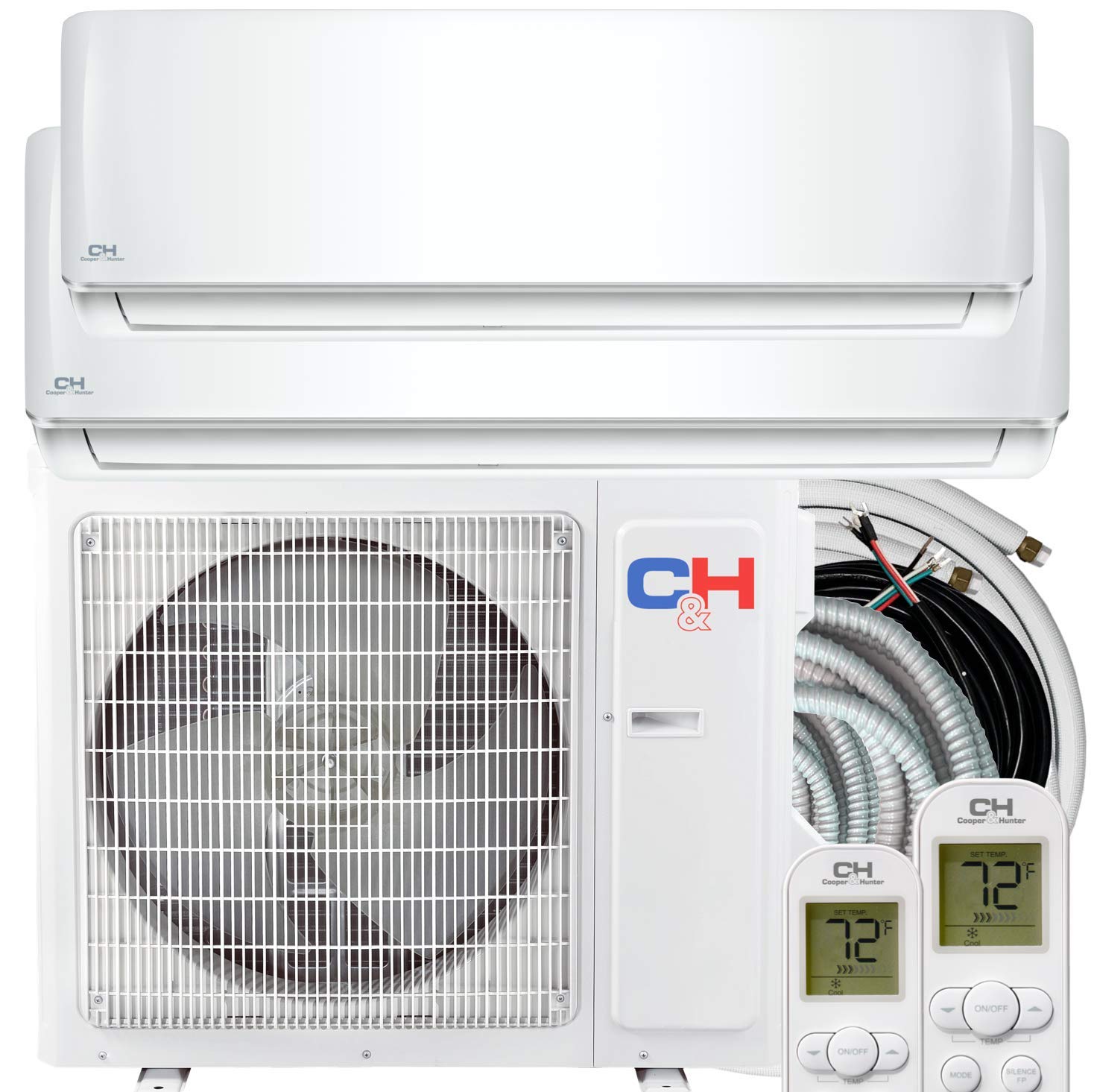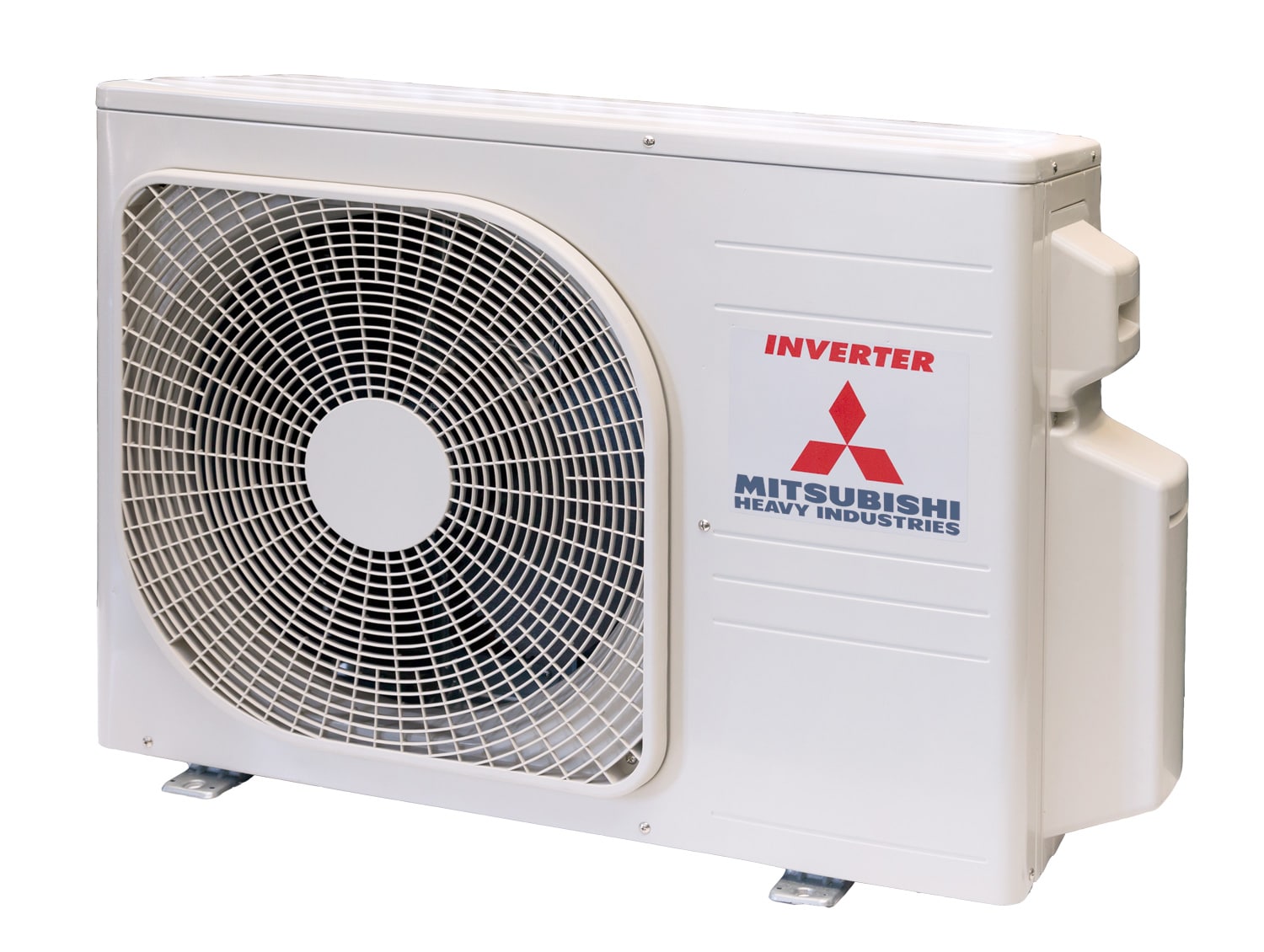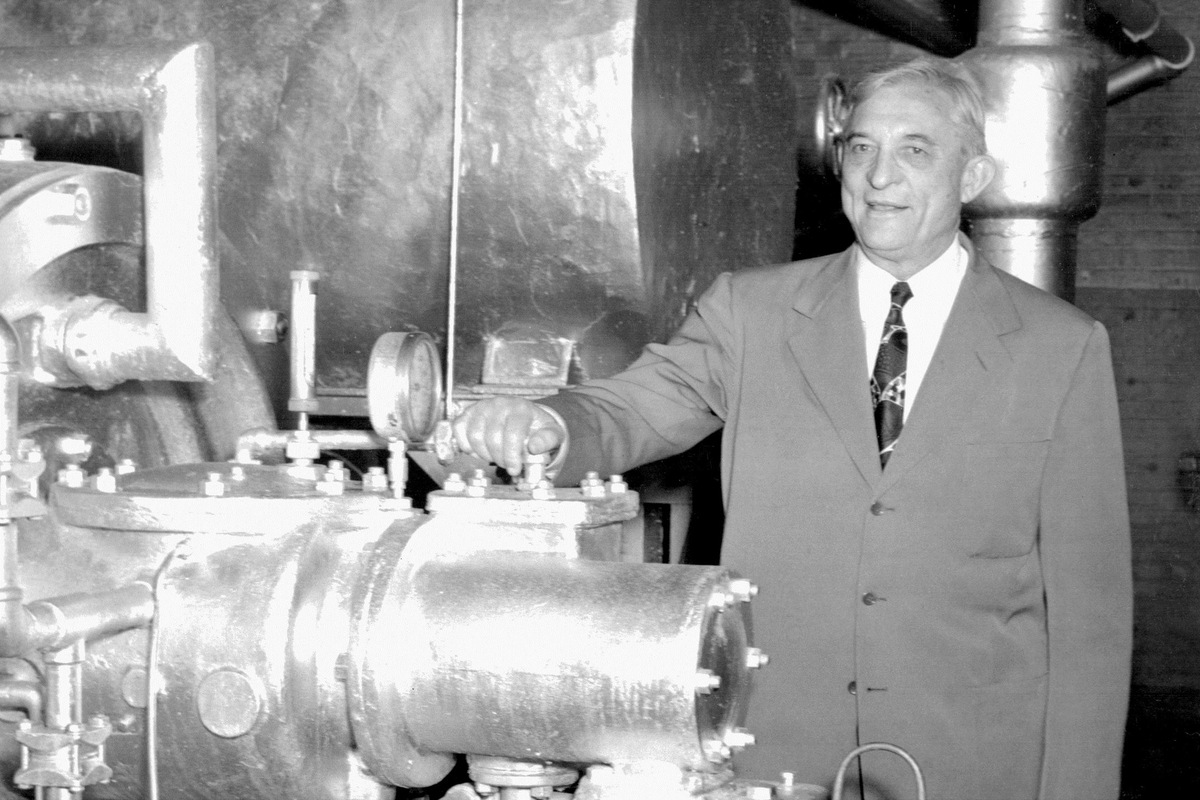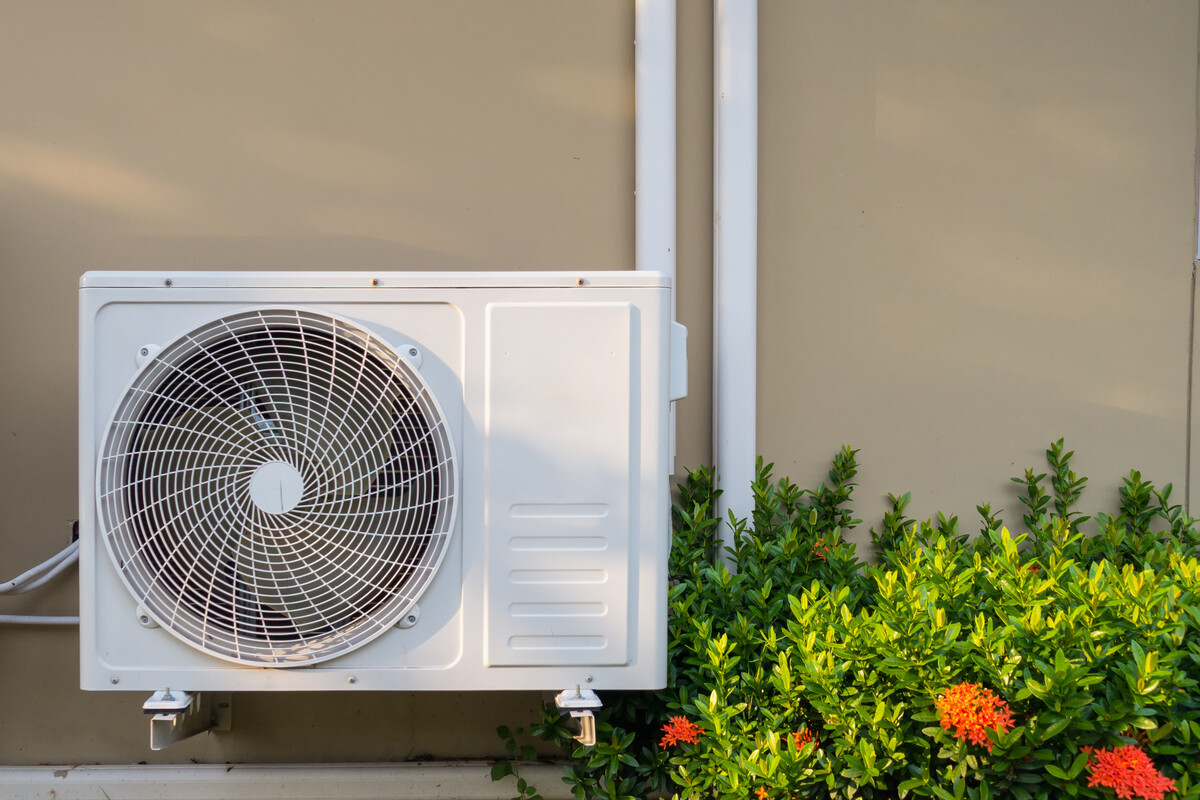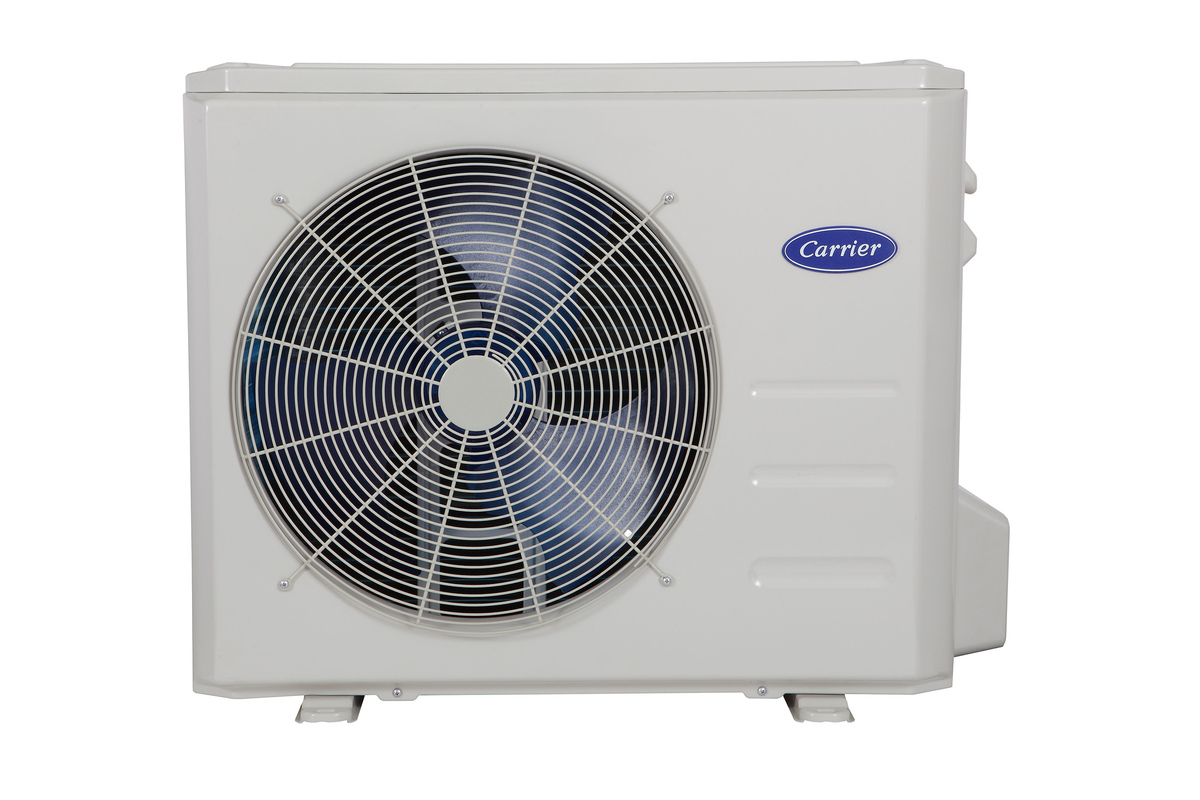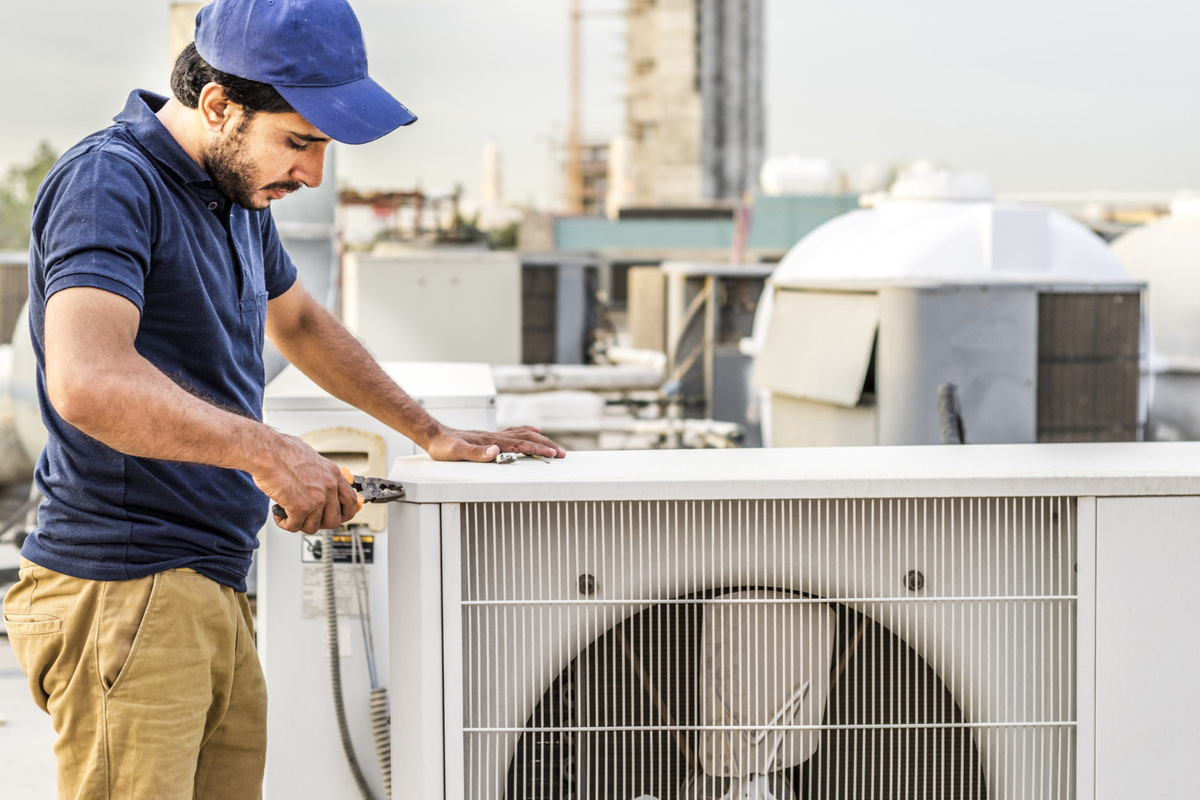Home>Home Maintenance>What Is Automatic Air Conditioning
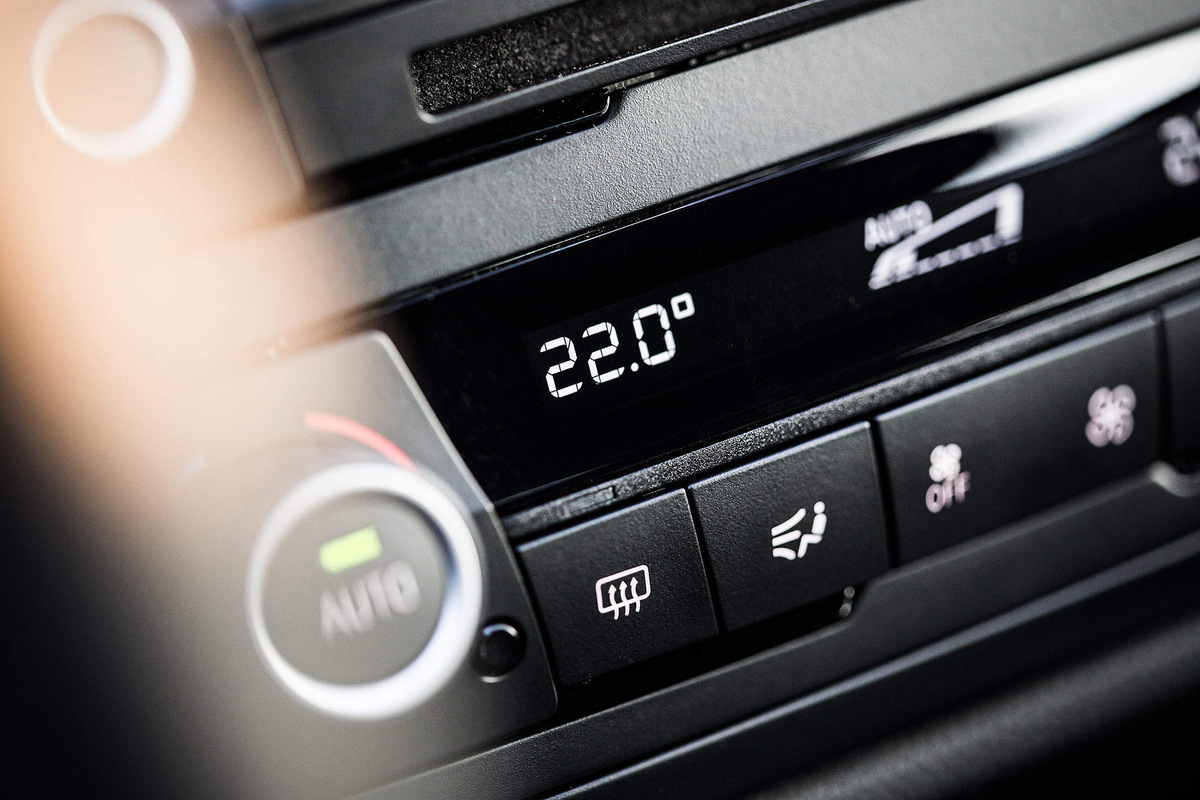

Home Maintenance
What Is Automatic Air Conditioning
Modified: March 6, 2024
Discover the benefits of automatic air conditioning for your home. Ensure optimal comfort and efficiency with professional home maintenance services.
(Many of the links in this article redirect to a specific reviewed product. Your purchase of these products through affiliate links helps to generate commission for Storables.com, at no extra cost. Learn more)
Introduction
Welcome to the world of automatic air conditioning, where comfort and convenience are brought to your fingertips. In our increasingly fast-paced lives, having a reliable and efficient cooling system is essential for creating a pleasant living environment. Automatic air conditioning offers a seamless and effortless way of maintaining the perfect temperature in your home, ensuring comfort and relaxation all year round.
So, what exactly is automatic air conditioning? In simple terms, it is a system that automatically regulates the temperature, airflow, and humidity in a space to create an optimal and comfortable indoor environment. Gone are the days of manually adjusting thermostats and struggling with inadequate cooling. With automatic air conditioning, you can sit back, relax, and let technology do the work for you.
Automatic air conditioning systems utilize a combination of sensors, control units, and programming algorithms to monitor and adjust the temperature based on your desired settings. These advanced systems are designed to provide precise and consistent cooling, creating a soothing and comfortable atmosphere in your home.
Whether you’re battling with scorching heatwaves or trying to create a cozy environment during the chilly winter months, automatic air conditioning has got you covered. It ensures that the temperature is maintained at a comfortable level, regardless of the external conditions. Say goodbye to the time-consuming and frustrating task of constantly adjusting your air conditioner to find the perfect balance.
With automatic air conditioning, you can enjoy the convenience of setting your desired temperature and letting the system do the rest. No more waking up in the middle of the night to adjust the thermostat, or returning to a hot and stuffy home after a long day at work. The system detects changes in temperature and adjusts the cooling accordingly, keeping your surroundings consistently comfortable.
Beyond the convenience factor, automatic air conditioning also offers a range of benefits for homeowners. Not only does it improve indoor air quality by removing dust and allergens, but it also reduces humidity levels, preventing the growth of mold and mildew. Additionally, these systems are energy-efficient, reducing your carbon footprint and saving you money on your utility bills.
In this article, we will dive deeper into the world of automatic air conditioning. We will explore how these systems work, the common features they offer, and provide maintenance and troubleshooting tips to ensure your system operates at its best. So, let’s embark on this journey and discover the wonders of automatic air conditioning!
Key Takeaways:
- Say goodbye to manual thermostat adjustments and inadequate cooling with automatic air conditioning. Enjoy consistent comfort and energy efficiency all year round, hassle-free!
- Experience the wonders of automatic air conditioning – from personalized settings to improved air quality. Sit back, relax, and let technology create the perfect indoor climate for you.
Read more: What Is Refrigeration Air Conditioning
Definition of Automatic Air Conditioning
Automatic air conditioning is a cutting-edge technology that combines temperature control, airflow management, and humidity regulation to create a comfortable and controlled indoor environment. It eliminates the need for manual adjustments and provides a seamless and effortless cooling experience.
Unlike traditional air conditioning systems that rely on manual thermostat adjustments, automatic air conditioning uses a complex network of sensors, control units, and programming algorithms to monitor and adjust the temperature without human intervention. This intelligent system constantly evaluates the ambient temperature, humidity levels, and user preferences to ensure optimal comfort.
One of the main components of automatic air conditioning is the sensor array. These sensors, often strategically placed throughout the space, detect changes in temperature and humidity. They act as the eyes and ears of the system, providing real-time data to the control unit.
The control unit analyzes the sensor data and activates the necessary components of the system to achieve the desired temperature. It communicates with the compressor, fan, and air ducts to regulate the airflow and temperature. Through the integration of advanced programming algorithms, the control unit can anticipate temperature fluctuations and adjust the cooling capacity accordingly.
Additionally, automatic air conditioning systems offer various modes and settings to meet different comfort needs. These modes include cooling, heating, dehumidifying, and ventilation, allowing users to customize their indoor environment according to their preferences. Some advanced systems even have smart features that learn and adapt to the occupants’ lifestyle, optimizing energy consumption and comfort levels.
Automatic air conditioning can be found in a wide range of settings, from residential homes to commercial buildings and vehicles. It has become an essential aspect of modern-day living, providing an enhanced and comfortable living experience.
Overall, automatic air conditioning is a revolutionary technology that brings convenience, comfort, and energy efficiency to our living spaces. By automating temperature control and leveraging advanced sensors and control units, it creates an optimized indoor environment without the need for constant manual adjustments. So, sit back, relax, and let automatic air conditioning take care of your comfort needs!
How Automatic Air Conditioning Works
Understanding how automatic air conditioning works can help you appreciate the technology behind the comfort it provides. While it may seem like magic, it’s actually a combination of intelligent sensors, control units, and mechanical components working together to create the perfect indoor climate.
Let’s break it down step by step:
- Sensor Detection: Automatic air conditioning systems are equipped with temperature and humidity sensors strategically placed throughout the space. These sensors continuously monitor the ambient conditions, providing real-time data to the control unit.
- Control Unit Interpretation: The control unit, which acts as the brain of the system, receives and interprets the data from the sensors. It uses advanced programming algorithms to analyze the information and determine the most appropriate cooling settings.
- Activation of Components: Once the control unit has determined the desired temperature, it activates the necessary components of the air conditioning system. This typically includes the compressor, fan, and air ducts.
- Compressor Function: The compressor is responsible for compressing and circulating the refrigerant within the system. As the refrigerant moves through the compressor, it increases in temperature and pressure.
- Heat Exchange: The refrigerant then moves through a series of coils where heat exchange occurs. In the cooling mode, the warm indoor air passes over the evaporator coil, and the refrigerant absorbs the heat from the air, causing it to cool down.
- Cool Air Distribution: The cooled air is then directed back into the space through the air ducts and vents. The fan, activated by the control unit, circulates the air, ensuring even cooling throughout the room.
- Temperature Monitoring: Throughout this process, the sensors continue to monitor the temperature in the room. If the temperature deviates from the desired setting, the control unit adjusts the compressor speed and airflow to maintain the optimal conditions.
Automatic air conditioning systems are designed to be efficient and energy-saving. They can adapt to changing environmental conditions and user preferences, ensuring a comfortable indoor environment while minimizing energy consumption.
It’s important to note that modern automatic air conditioning systems often come with additional features and capabilities. These can include air filtration systems to improve indoor air quality, smart functions that learn and adjust based on user behavior, and zone control options to target specific areas within a building.
Overall, automatic air conditioning works by integrating sensors, control units, and mechanical components to monitor and adjust the indoor environment as needed. By maintaining a consistent temperature and optimizing energy consumption, it delivers comfort and convenience to users.
Benefits of Automatic Air Conditioning
Automatic air conditioning offers a range of benefits that go beyond just providing comfort. From improved air quality to energy efficiency, this advanced technology has become an essential addition to modern living spaces. Let’s explore the key benefits of automatic air conditioning:
- Comfort: One of the primary benefits of automatic air conditioning is the enhanced comfort it provides. The system maintains a consistent and optimal temperature, regardless of external conditions. No more struggling with manual adjustments or suffering from fluctuating temperatures. With automatic air conditioning, you can enjoy a comfortable and soothing indoor environment all year round.
- Energy Efficiency: Automatic air conditioning systems are designed to be energy-efficient, helping to reduce both your carbon footprint and energy bills. These systems use advanced sensors and control units to monitor and adjust the cooling based on actual needs. They can automatically optimize settings and adjust the airflow to minimize energy consumption while still maintaining a comfortable temperature.
- Improved Indoor Air Quality: Automatic air conditioning often includes air filtration systems, which help remove dust, allergens, and other pollutants from the air. This results in improved indoor air quality, creating a healthier living environment and reducing the risk of respiratory issues. Breathing in clean and purified air can have significant benefits for overall health and well-being.
- Convenience and Ease of Use: Gone are the days of constantly adjusting thermostats or trying to find the right balance of cooling. Automatic air conditioning offers unmatched convenience and ease of use. With features such as programmable settings and smart controls, you can effortlessly set your desired temperature and let the system handle the rest. This convenience makes it easier to create a comfortable environment without any hassle.
- Humidity Control: Excess humidity can make a space feel uncomfortable and promote the growth of mold and mildew. Automatic air conditioning systems often include humidity control features that help regulate moisture levels. This not only enhances comfort but also helps protect your home and belongings from the damaging effects of high humidity.
- Quiet Operation: Unlike older air conditioning systems, which can be noisy and disruptive, automatic air conditioning units are designed for quiet operation. The advanced technology, along with sound-dampening materials, ensures a peaceful environment without distracting noise. This is especially beneficial when using the system in bedrooms, offices, or any space where peace and tranquility are desired.
- Increased Property Value: Installing automatic air conditioning can boost the overall value of your property. Potential buyers appreciate the comfort and convenience offered by these modern systems, making your home more desirable and potentially commanding a higher selling price.
Automatic air conditioning offers a range of benefits that enhance comfort, improve indoor air quality, and provide energy efficiency. Whether it’s creating a cozy atmosphere during winter or combating scorching summers, automatic air conditioning has become an indispensable technology for modern living. Its ability to maintain a comfortable indoor climate helps promote well-being, productivity, and overall quality of life.
Investing in an automatic air conditioning system not only provides immediate comfort but also contributes to long-term savings, energy conservation, and a healthier living environment.
Common Features of Automatic Air Conditioning Systems
Automatic air conditioning systems come equipped with a variety of features that enhance their functionality, convenience, and overall performance. These features are designed to provide a seamless and enjoyable cooling experience. Let’s explore some of the common features found in automatic air conditioning systems:
- Programmable Settings: Automatic air conditioning systems offer programmable settings that allow you to set specific temperatures and cooling schedules. This feature enables you to customize the system’s operation based on your lifestyle and preferences. For example, you can set the system to automatically lower the temperature in the evening when you’re ready to relax or increase it in the morning to wake up to a comfortable environment.
- Smart Controls: Many automatic air conditioning systems now come with smart control options. These systems can be integrated with smart home technology, allowing you to control the temperature and settings remotely from your smartphone or other connected devices. Smart controls provide convenience and flexibility, allowing you to adjust the cooling even when you’re away from home.
- Zoning Capabilities: Automatic air conditioning systems with zoning capabilities allow you to divide your space into different zones and independently control the temperature in each zone. This feature is particularly useful in larger homes or commercial buildings, where different areas may have varying cooling needs. Zoning ensures personalized comfort and optimal energy efficiency by only cooling the areas that are in use.
- Airflow Control: Another important feature of automatic air conditioning systems is airflow control. These systems offer the ability to adjust the direction and intensity of the airflow to ensure even distribution of cool air throughout the space. Additionally, some systems have the option to switch between different fan speeds, allowing you to customize the cooling experience based on your preference.
- Energy-saving Mode: To promote energy efficiency, automatic air conditioning systems often include an energy-saving mode. This setting optimizes the system’s operation to reduce energy consumption while maintaining a comfortable temperature. The system may adjust cooling levels, fan speed, and other parameters to minimize power usage without sacrificing comfort.
- Air Filtration: Many automatic air conditioning systems feature built-in air filtration capabilities. These filters help remove dust, pollen, allergens, and other airborne particles, improving indoor air quality. This is especially beneficial for people with allergies or respiratory conditions, as it helps create a healthier and more comfortable living environment.
- Auto Restart: In the event of a power outage, automatic air conditioning systems with auto restart capabilities can automatically resume operation with the previously programmed settings once power is restored. This feature ensures that you don’t have to manually reset the system after an interruption, providing continuous comfort and convenience.
- Quiet Operation: Noise can be a nuisance, especially when trying to relax or concentrate. Automatic air conditioning systems often prioritize quiet operation, utilizing noise-dampening technologies and optimizing fan design to reduce sound levels. This allows you to enjoy the cooling comfort without the distraction of excessive noise.
These are just a few examples of the common features you can expect to find in automatic air conditioning systems. Depending on the brand and model, other features such as sleep mode, humidity control, and intelligent learning capabilities may also be available. When choosing an automatic air conditioning system, consider your specific needs and preferences to find the one that suits you best.
By incorporating these advanced features, automatic air conditioning systems offer superior control, convenience, and energy efficiency, ensuring a comfortable and enjoyable indoor environment throughout the year.
Regularly check and replace the air filters in your automatic air conditioning system to ensure efficient and clean airflow.
Read more: What Is A SEER In Air Conditioning
Maintenance and Troubleshooting Tips for Automatic Air Conditioning
To ensure that your automatic air conditioning system operates efficiently and reliably, regular maintenance and troubleshooting are essential. By following these tips, you can prevent potential issues, maximize performance, and extend the lifespan of your system:
Maintenance Tips:
- Keep the outdoor unit clean and clear of debris, such as leaves, dirt, and branches. Regularly inspect and remove any obstructions to maintain optimal airflow.
- Clean or replace the air filters according to the manufacturer’s recommendations. Clogged filters can impede airflow and reduce cooling efficiency. Dirty filters can also contribute to poor indoor air quality.
- Inspect the air vents and ensure they are not blocked or obstructed. Proper airflow is crucial for efficient cooling and even temperature distribution throughout the space.
- Check the condensate drain line for any clogs or blockages. A blocked drain line can cause water leaks and potential damage to your system. Clear any obstructions and clean the drain line regularly.
- Have a professional HVAC technician perform a regular check-up and maintenance service at least once a year. They can inspect the system, clean the coils, lubricate moving parts, and address any potential issues before they escalate.
Troubleshooting Tips:
- If the system is not cooling properly, check if the temperature settings are correct. Ensure that the thermostat is set to the desired temperature and mode.
- Check the power supply to the unit. Verify that it is properly connected and that the circuit breaker has not tripped. If necessary, reset the breaker and check for any blown fuses.
- Examine the air filters for dirt and debris. A clogged filter can restrict airflow and reduce cooling efficiency. Clean or replace the filters as needed.
- If the system is making unusual noises, such as rattling or squealing, it may indicate a problem with the fan motor or other components. In such cases, it’s best to contact a professional technician to diagnose and resolve the issue.
- If there are water leaks or excessive moisture around the unit, it may be a sign of a clogged condensate drain or a refrigerant leak. Contact a professional technician to identify and fix the problem to prevent further damage.
- If the system is not responding to the controls or is displaying error codes, refer to the user manual for troubleshooting guidance. Follow the recommended steps, and if the problem persists, contact a qualified technician for assistance.
When it comes to maintenance and troubleshooting, it’s important to prioritize safety. Before conducting any maintenance tasks, ensure that the power to the unit is turned off. If you encounter any issues that you’re unsure how to handle, it’s always best to consult a professional HVAC technician.
By following these maintenance and troubleshooting tips, you can keep your automatic air conditioning system in top condition, enjoy consistent cooling performance, and minimize the risk of unexpected breakdowns.
Conclusion
Automatic air conditioning systems have revolutionized the way we cool our living spaces. With their advanced technology and intelligent features, these systems provide a seamless and convenient way to create a comfortable indoor environment throughout the year. By automatically adjusting temperature, airflow, and humidity levels, they offer unparalleled comfort and energy efficiency.
From programmable settings to smart controls, automatic air conditioning systems give you the power to customize and personalize your cooling experience. They offer features like zoning capabilities, air filtration, and quiet operation to enhance your comfort and ensure an optimal living environment.
With automatic air conditioning, you can say goodbye to the hassle of constantly adjusting thermostats and struggling with inadequate cooling. These systems take the guesswork out of achieving the perfect temperature and create a consistently pleasant living space, regardless of external conditions.
Moreover, automatic air conditioning systems provide a range of benefits beyond just comfort. They offer energy efficiency, helping to reduce carbon footprint and save on energy costs. Improved indoor air quality, humidity control, and quiet operation are additional advantages that enhance the overall living experience.
To keep your automatic air conditioning system functioning optimally, regular maintenance is crucial. By following simple steps such as cleaning or replacing air filters, keeping the outdoor unit clear of debris, and scheduling professional check-ups, you can ensure the longevity and efficiency of your system.
In the event of any issues, troubleshooting can help identify and resolve common problems. However, if you encounter complex or persistent issues, it’s recommended to seek the assistance of a professional HVAC technician who can diagnose and repair the system.
In conclusion, automatic air conditioning systems have transformed the way we experience cooling in our homes and businesses. They provide unparalleled comfort, energy efficiency, and convenience. By investing in regular maintenance and understanding basic troubleshooting techniques, you can enjoy the benefits of automatic air conditioning for years to come.
So, sit back, relax, and let the wonders of automatic air conditioning create the perfect climate for your comfort and well-being.
Frequently Asked Questions about What Is Automatic Air Conditioning
Was this page helpful?
At Storables.com, we guarantee accurate and reliable information. Our content, validated by Expert Board Contributors, is crafted following stringent Editorial Policies. We're committed to providing you with well-researched, expert-backed insights for all your informational needs.
